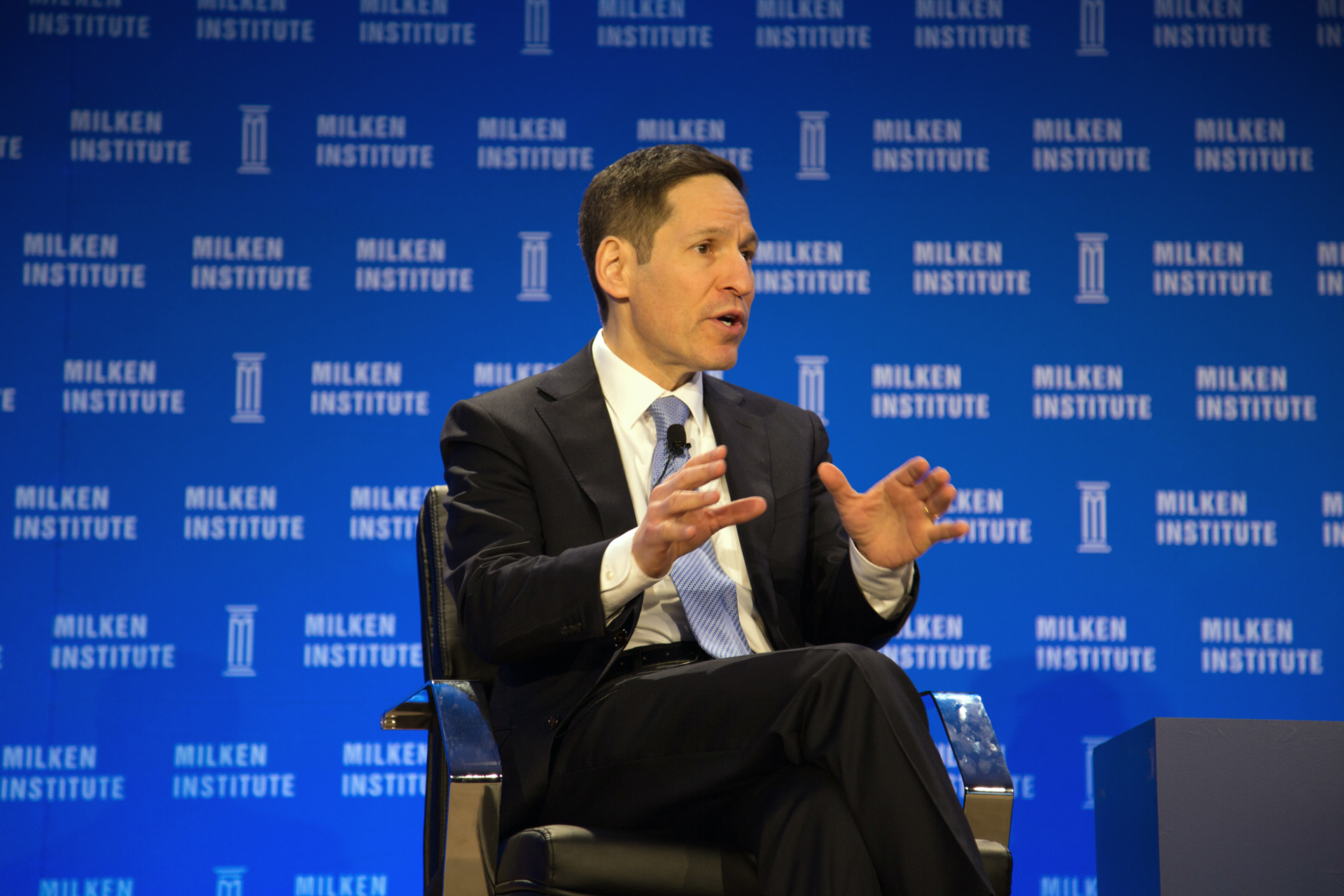By Ruth Steinhardt
The director of the Centers for Disease Control and Prevention said during a Milken Institute-sponsored public health summit on March 2 that “speed is of the essence” in fighting the growing threat of the Zika virus.
“It would be unanticipated to see widespread transmission [in the United States], but that doesn’t mean we can let down our guard,” CDC Director Tom Frieden said.
Dr. Frieden spoke at the Milken Institute Public Health Summit in Washington, D.C., where several hundred attendees and a cross-section of experts convened to discuss some of the world’s most pressing health issues.
Several faculty and administrators from the GW Milken Institute School of Public Health—including Dean Lynn Goldman and William Dietz, newly installed chair of the Sumner M. Redstone Global Center for Prevention and Wellness—participated as speakers and panelists at the summit, held at the Ritz-Carlton in Washington, D.C.
In introducing Dr. Frieden, Milken Institute CEO Michael Klowden noted that the head of the CDC unexpectedly had to appear before Congress the same day. Milken Institute Chairman Mike Milken said, “We’re honored to have Tom with us today.”
Dr. Frieden sat down with Washington Post columnist Michael Gerson for a discussion on Zika’s reach and potential effects.
Puerto Rico is the part of the United States most vulnerable to a Zika epidemic, Dr. Frieden said. The disease can spread rapidly where two conditions are met: the specific mosquito species that carries Zika is present, and communities are crowded and lack air conditioning or screens on buildings.
Both conditions are met in Puerto Rico, where Dr. Frieden pointed out that contagious viruses could—and have, as in the case of last year’s Chikungunya epidemic—spread all over the island in a matter of months. If Zika takes a similarly strong hold there, he said, “we could see 700,000 infections by the end of the year and thousands of infected pregnant women.”
In the mainland United States, Dr. Frieden said, the conditions for widespread Zika transmission largely do not exist outside of a few communities in some Southern states. However, people who have visited infected regions may transmit the virus sexually. And many appear to have done so, at what Dr. Frieden called an “unanticipated” rate.
The CDC currently receives “about a call a day” about potential cases of sexually transmitted Zika, Dr. Frieden said. “And we’re confirming many of those cases in people who have not traveled.”
Dr. Frieden said men who had traveled to high-risk areas, although asymptomatic themselves, passed the virus on to sexual partners—some of whom were or became pregnant.
“We have to do everything possible to reduce the risk to pregnant women,” he said.
Fortunately, he continued, advances in detection and treatment continue at the CDC.
Though any development of a Zika vaccine will take “a couple of years” even in a best-case scenario, Dr. Frieden said, the agency already has scaled up its testing and made tests and prevention kits available in vulnerable areas.
That they are able to do so is evidence of an increasingly cooperative network of countries combatting global health problems, Dr. Frieden said. Developing and strengthening that network will be crucial to global public health.
“It’s so important that we build systems around the world to define threats when they first emerge, stop them wherever possible and prevent them to the greatest extent,” he said.
Despite the danger posed by Zika, however, Dr. Frieden said the greatest specter for him and his CDC colleagues is that of a global flu pandemic like the one that killed somewhere around 50 million people, many of them young and otherwise healthy, in 1918 and 1919.
“[Influenza] is without a doubt the disease that worries us in public health, epidemiologists, the most,” Dr. Frieden said. “Even in a ‘good’ year, flu kills thousands of people. We know we have to continue to build systems to understand flu around the world. We have to improve vaccination. We have to reduce risk wherever possible by reducing the human-animal interface that might allow mixing types of flu viruses.
“Flu is the big one,” he said. “Flu is the possibility of a pandemic that would be truly world changing.”


